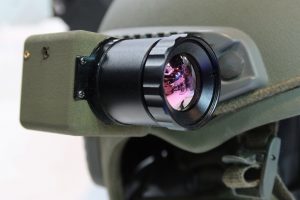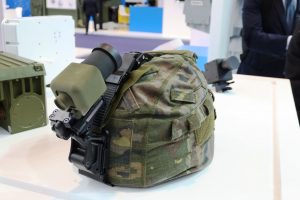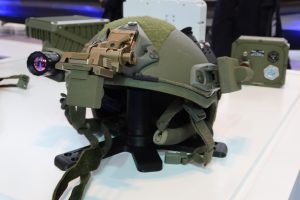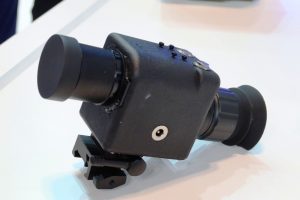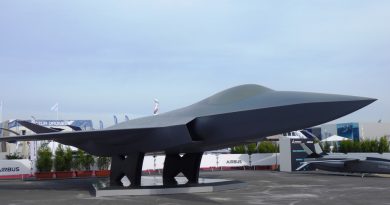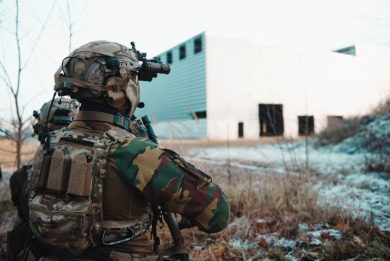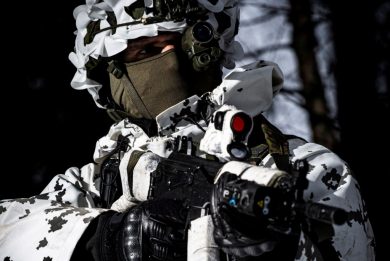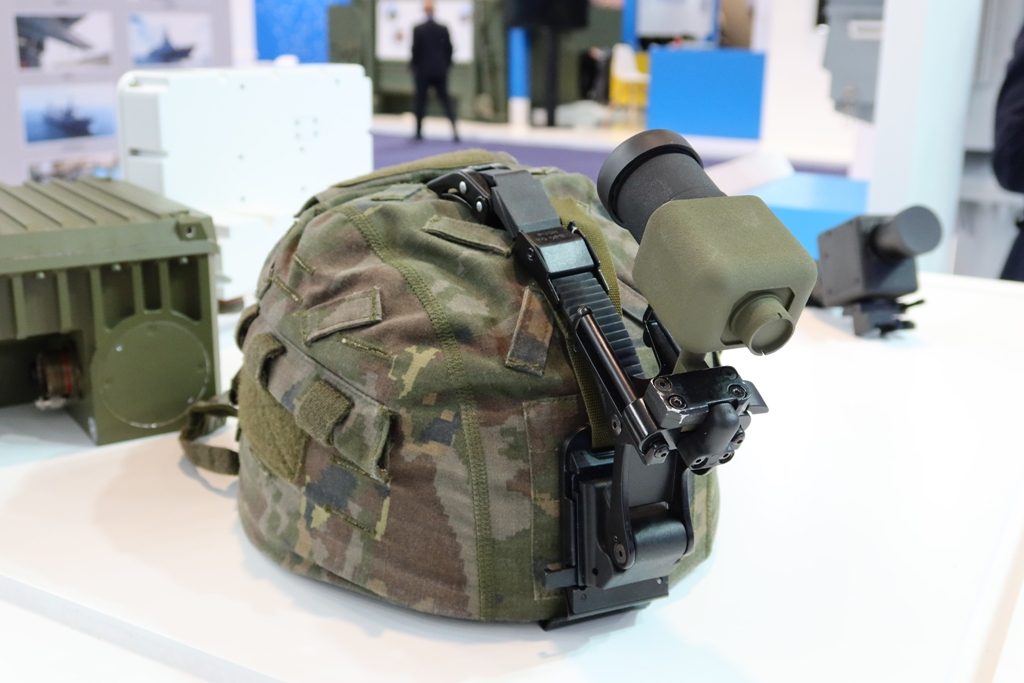
Escribano unveils its NIX family of thermal vision systems
By Paolo Valpolini
In the wide stand that hosts part of the ESCRIBANO Mechanical and Engineering (EME) portfolio at FEINDEF, the defence exhibition held in Madrid in early November, one of the newest items was also one of the smallest. The NIX is a new family of thermal imaging systems dedicated to the soldier, which comes in three different configurations; the first one is a hand-held system that doubles as sight when fitted with a Picatinny attachment, the two other being designed to be used on a helmet, one of them being an all-in-one solution while the second sees the sensor, the display and the battery pack split in order to reduce as much as possible the weight at the front of the helmet.
All configurations are based on a last generation LWIR sensor, a 640×521 uncooled microbolometer working in the 8-12 µm band, with a 12 µm pitch, which allows reducing its dimensions. “Apart from the thermal sensor itself, all other elements, mechanics, electronics, optics and algorithms are produced by us at EME,” Iván Sal Nogueira, Escribano Electro-Optical Director tells EDR On-Line. The image is provided to the soldier on a 1280×720 micro-OLED display ensuring an HD resolution, the 11 mm focal length optic providing a 40°x30° field of view. Both the sensor and the display were purposely designed by undisclosed manufacturers according to EME specifications.
According to EME the detection range for a human size target is 375 meters, recognition being possible at 180 meters, while the operator will identify his target at 112 meters.
In all three configurations power is provided by two batteries of different size, the main one ensuring normal use and one, the back-up one taking over when the main is low on power, the system swapping automatically. “We have designed the NIX in order to easily adapt it to different types of batteries, CR7, AA, CR123, but other can be considered on customers’ request. Both the main battery and the back-up one change according to the version, however we aim at ensuring 2 hours full functionality with the back-up one,” Iván Sal explains. As with the sensor, also back-up batteries have been designed by a third party in order to satisfy EME requirements, size being the key issue.
This is particularly true for the lightest of the three versions, the all-in-one helmet mounted NIX, “for which we have a target weight with batteries of less than 300 grams,” the EO director says, “a result that was obtained using metallic materiel developed in house.”
The second helmet-mounted solution sees the OLED display only installed on the bracket fixed to the soldier’s helmet, this assembly weighing only 97 grams. On one side of the helmet we find the sensor with the lens, while on the opposite side we find the battery pack, the one used on the prototype has a capacity of 2000 mAh, but it can be configured according to customer’s requirements; battery, sensor and display are linked by cables. “In the current configuration we managed to bring the centre of gravity of the three elements exactly on the soldier’s neck, which considerably reduces fatigue,” Mr. Sal says.
The hand-held/sight configuration is bigger than the ones described until now, mainly due to the rear optical assembly that allows viewing the display from distance, a must when using the system for sighting on an assault rifle. This configuration is aimed at evolving into a real target acquisition system, a Laser Range Finder being one of the first items that will be inserted into the assembly; we identified systems with ranges of 3.3 km or 8 km, which will add only 50 to 70 grams to the system,” the EME representative explained. The LRF can leave the place to a laser pointer, which can provide a green, red or blue dot, or be visible in the IR spectrum. According to Mr. Sal, the LRF can be either integrated into the sight or added on the side, depending on customers’ requirements. A digital compass is already part of the package, a connection for linking the NIX to a GPS being also foreseen, which will allow to give the grids of the target. Of course an electronically generated reticle will be available in this configuration. The configuration being far from frozen, no weight was provided for the hand-held/sight version.
Connectivity will be the next step for all versions, in order to allow image and video transfer to upper command levels as well as that of messages and imagery from upper levels to the soldier.
The NIX is fully ITAR free, and all configurations are IP67 certified. Currently the system is undergoing company functional trials, the company planning to reach the final configuration and to qualify the NIX by Q1 2022.
Photos by P. Valpolini

